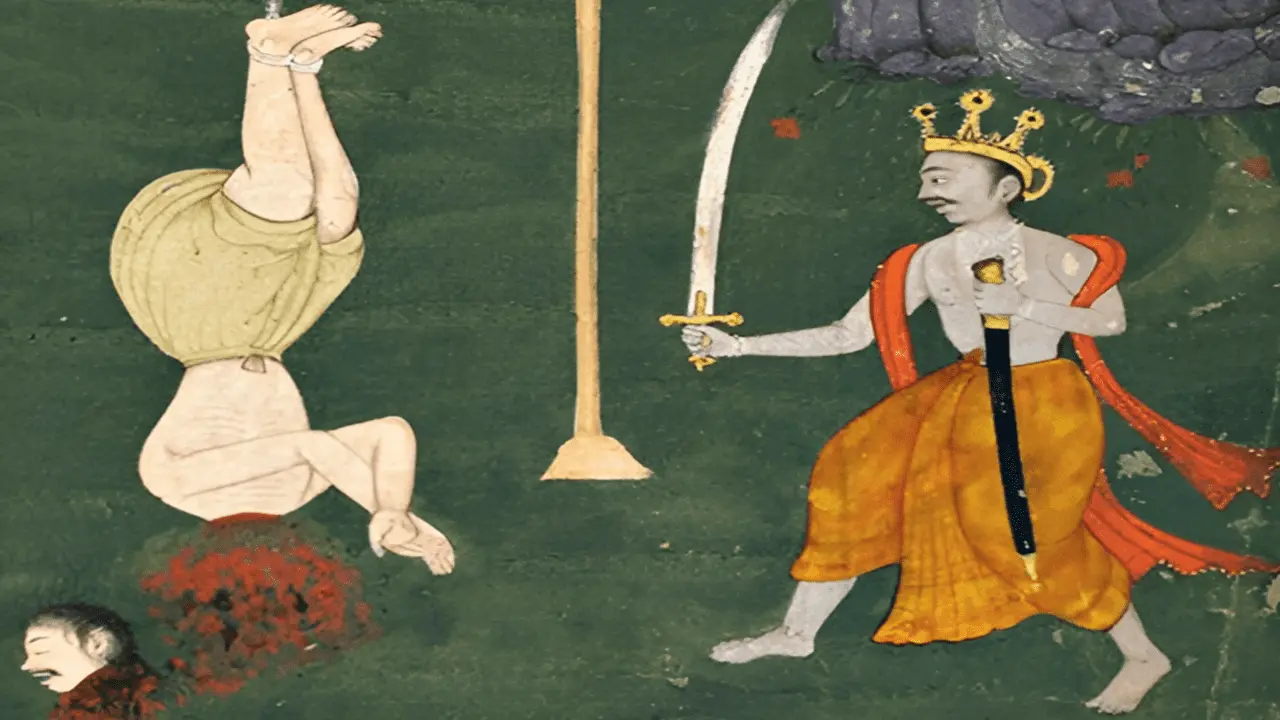
Ram Setu : A Link Between India and Sri Lanka
The tale of Ram Setu is deeply rooted in the Hindu epic, the Ramayana. According to the scripture, Lord Rama, the seventh incarnation of Lord Vishnu, embarked on a mission to rescue his wife, Sita, from the demon king Ravana. Sita had been abducted and taken to Lanka (present-day Sri Lanka), and Lord Rama, determined to rescue her, sought the help of the Vanara (monkey) army led by Hanuman.
The Construction of the Ram Setu
Facing the vast expanse of the ocean, Lord Rama needed a way to cross over to Lanka. It was then that the Vanara army, under the guidance of Nala, the divine architect, began constructing a bridge using floating stones. These stones, inscribed with the name of Lord Rama, miraculously floated on water, forming a sturdy path from Rameswaram in India to the shores of Lanka.
The construction of Ram Setu is said to have been completed in just five days, an extraordinary feat attributed to divine intervention and the unwavering devotion of the Vanara army. This bridge became the crucial link that enabled Lord Rama and his allies to reach Lanka and wage the epic battle against Ravana.
The construction of Ram Setu is said to have been completed in just five days, an extraordinary feat attributed to divine intervention and the unwavering devotion of the Vanara army. This bridge became the crucial link that enabled Lord Rama and his allies to reach Lanka and wage the epic battle against Ravana.
The Story of Samudra and Rama's Anger
A pivotal episode in the Ramayana involves the god of the sea, Samudra. When Lord Rama first requested Samudra to part his waters and allow a passage for his army, Samudra remained silent. Enraged by the lack of response, Rama, in his divine fury, aimed his powerful bow and arrow at the sea, threatening to dry it up. This display of anger terrified Samudra, who then appeared before Rama, pleading for mercy.
Samudra suggested that a bridge could be built using the floating stones, thus aiding Rama in his quest. This story underscores the divine authority of Lord Rama and the belief that nature itself bowed to his will. It also highlights the role of divine intervention in the construction of Ram Setu, making it an enduring symbol of faith.
Samudra suggested that a bridge could be built using the floating stones, thus aiding Rama in his quest. This story underscores the divine authority of Lord Rama and the belief that nature itself bowed to his will. It also highlights the role of divine intervention in the construction of Ram Setu, making it an enduring symbol of faith.
बिनय न मानत जलधि जड़ गए तीनि दिन बीति।
बोले राम सकोप तब भय बिनु होइ न प्रीति॥
बोले राम सकोप तब भय बिनु होइ न प्रीति॥
Location and Geography of the Ram Setu
Ram Setu stretches from Pamban Island, also known as Rameswaram Island, in India to Mannar Island in Sri Lanka. The bridge is approximately 30 kilometers long and consists of a chain of limestone shoals, sandbanks, and islets. The area is a natural shallow formation in the Palk Strait, lying between the southeastern coast of Tamil Nadu in India and the northwestern coast of Sri Lanka.
Scientific Validation of Ram Setu
In recent years, scientific studies have added a new dimension to the story of Ram Setu. Geological and archaeological research suggests that the bridge is indeed a man-made structure, dating back to the same period as the Ramayana.
Studies conducted by the National Remote Sensing Agency (NRSA) and NASA using satellite imagery have revealed a series of shoals and sandbanks that appear to form a continuous bridge. Further research indicates that the materials and construction techniques used in Ram Setu correspond with ancient engineering practices, supporting the notion that it was built by human hands.
These findings align with the timeline of the Ramayana, suggesting that the bridge is not a mythological construct but a historical reality. This scientific validation has sparked renewed interest and debate about the origins and significance of Ram Setu.
Studies conducted by the National Remote Sensing Agency (NRSA) and NASA using satellite imagery have revealed a series of shoals and sandbanks that appear to form a continuous bridge. Further research indicates that the materials and construction techniques used in Ram Setu correspond with ancient engineering practices, supporting the notion that it was built by human hands.
These findings align with the timeline of the Ramayana, suggesting that the bridge is not a mythological construct but a historical reality. This scientific validation has sparked renewed interest and debate about the origins and significance of Ram Setu.
Conclusion
Ram Setu stands as a bridge between history and reality, a testament to the rich cultural and spiritual heritage of India. Its story, rooted in the epic Ramayana, continues to inspire devotion and wonder. Whether viewed through the lens of faith or as a captivating legend, Ram Setu remains an enduring symbol of the power of belief and the divine.
Scientific findings supporting the man-made origins of Ram Setu add a fascinating layer to its story, bridging the gap between ancient narratives and modern understanding. For those who seek to explore the depths of Indian history and its intersection with historical evidence, Ram Setu offers a journey into a world where gods walked the earth, and miracles were woven into the fabric of everyday life. This ancient bridge, with its stones that float on the sea of faith, will forever be a beacon of devotion and divine intervention.
Scientific findings supporting the man-made origins of Ram Setu add a fascinating layer to its story, bridging the gap between ancient narratives and modern understanding. For those who seek to explore the depths of Indian history and its intersection with historical evidence, Ram Setu offers a journey into a world where gods walked the earth, and miracles were woven into the fabric of everyday life. This ancient bridge, with its stones that float on the sea of faith, will forever be a beacon of devotion and divine intervention.





